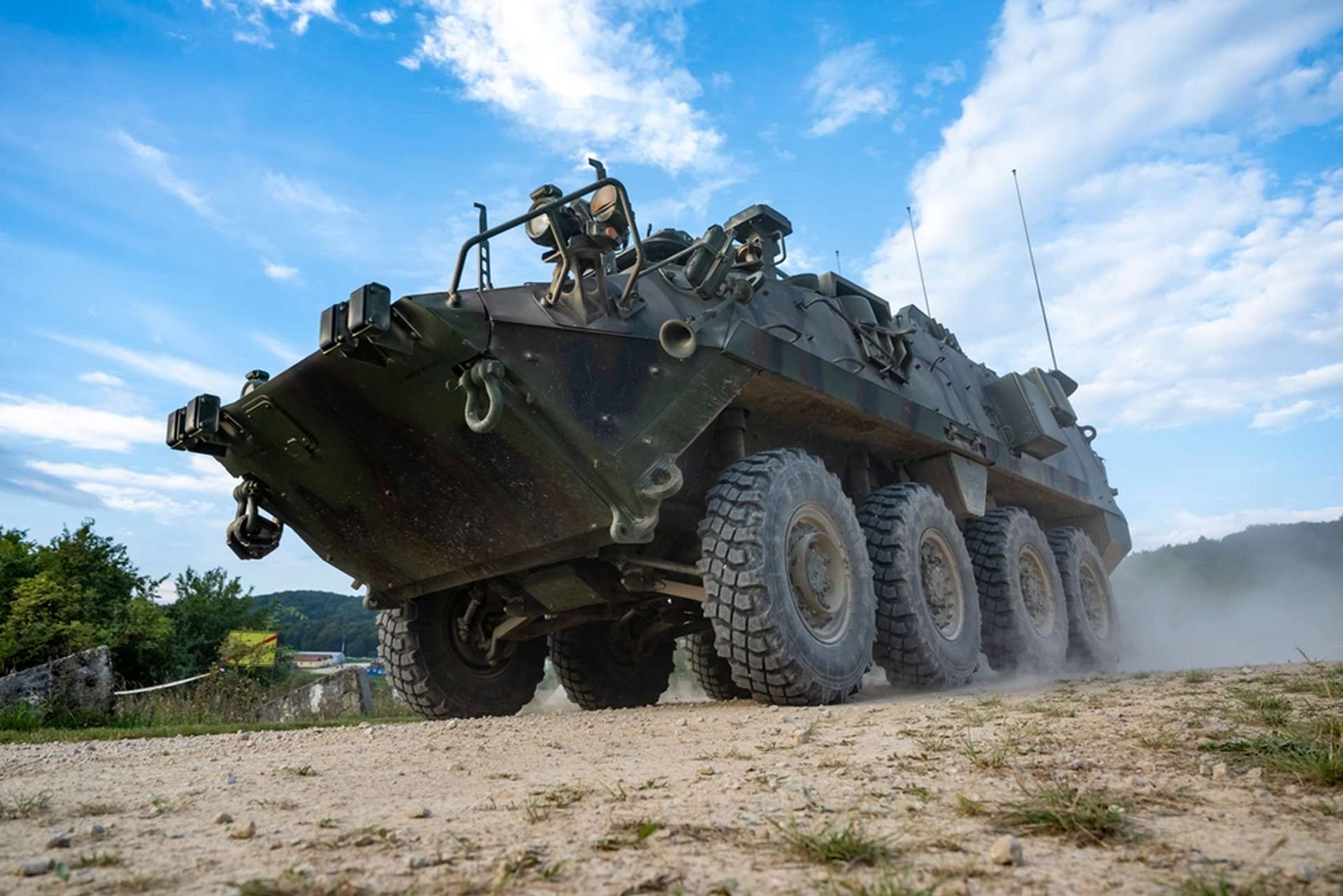Breaking News
Russia deploys captured American-made M1126 Stryker ICV against Ukrainian Forces in Kursk.
On October 13, 2024, Russian media reported that the 810th Separate Guards Marine Brigade had repaired a captured Stryker armored vehicle, with plans to use it against Ukrainian forces in the Kursk region. This unit, usually based in Sevastopol, reportedly took control of an American-made Stryker from Ukrainian troops, specifically the 82nd Separate Airborne Assault Brigade, following combat that resulted in the death of the Ukrainian crew.
Follow Army Recognition on Google News at this link

The Russian 810th Separate Guards Marine Brigade had reportedly repaired a captured M1126 Stryker armored vehicle, with plans to use it against Ukrainian forces in the Kursk region. (Picture source: Russian media)
The vehicle, identified as an M1126 Stryker Infantry Carrier Vehicle, was likely seized on August 14, 2024, during a Ukrainian offensive in Russia's Kursk Oblast. As reported by Army Recognition, this marked the first reported capture of a U.S.-made Stryker by Russian forces. Images show the vehicle bearing the flag of the same 810th Separate Guards Marine Brigade, which could reinforce the idea that it is the same vehicle. This incident occurred during a period of intensified operations in the region, with Ukrainian forces advancing up to 10 kilometers into Kursk Oblast in the early days of the offensive. The presence of Western-supplied vehicles like the Stryker and German Marder reportedly enabled Ukrainian units to break through Russian defensive positions, reaching key locations such as the Sudzha gas hub.
The display of this captured Stryker aligns with Russia's broader approach of showcasing Western military equipment obtained from Ukrainian forces. The Russian Defense Ministry has organized exhibitions in Moscow, displaying various captured Western vehicles, including U.S. M1 Abrams and German Leopard 2A6 tanks, as well as Ukrainian T-64BV and T-72AG models. Also featured in these exhibitions are U.S. Bradley M2A2, Swedish CV9040C, German Marder 1A3, British Husky tactical support vehicles, and French AMX-10RC armored vehicles. These exhibitions are part of a wider strategy that reflects Russia's perspective on Western involvement in the conflict.

This M1126 Stryker may be the same vehicle captured in August 2024, which was specifically displayed bearing the flag of the 810th Separate Guards Marine Brigade. (Picture source: Telegram/War Webm)
The Strykers supplied to Ukraine through U.S. and NATO military aid packages have supported Ukraine’s offensive actions. The vehicles offer mobility and armor, which have proven useful in operations requiring rapid advancement. The Stryker series, developed by General Dynamics Land Systems, includes several variants designed for different roles, such as the M1135 Nuclear, Biological, Chemical Reconnaissance Vehicle and the M1128 Mobile Gun System. Initially introduced in 2002, the Stryker line has undergone various upgrades, including the addition of the Double V-Hull for enhanced blast protection. Powered by a Caterpillar diesel engine, the Stryker can achieve speeds up to 100 km/h and is equipped with a Remote Weapon Station that accommodates a .50-caliber machine gun or 40mm grenade launcher.
The Strykers deployed in the Kursk offensive form part of a larger allocation of 189 vehicles pledged to Ukraine by the U.S. and NATO allies, which includes 90 Stryker APCs and 20 Stryker-specific mine rollers. During this offensive, Ukrainian forces reportedly secured around 1,000 square kilometers of land and captured approximately 74 settlements, moving up to 20 kilometers into Russian territory. Western-supplied vehicles such as the Stryker, German Marder, and other armored units played a role in this advance, compelling Russia to redeploy resources from other areas, including Donetsk. The increased pressure from the Ukrainian offensive led Russia to declare a state of emergency in Kursk and surrounding regions, signaling a concentrated effort to counter these operations.
The Stryker’s design, based on the Canadian LAV III and Swiss Mowag Piranha, prioritizes modularity and adaptability. It includes a range of variants capable of supporting different mission types, with protective features suitable for diverse combat scenarios. Comparatively, the Stryker has a range of advantages over Russian BTR vehicles. For instance, against the BTR-60, it offers enhanced armor and fuel efficiency. The BTR-70, with its dual-engine system, contrasts with the Stryker’s single diesel engine, which improves fuel consumption and maintenance. The BTR-80, while amphibious, lacks the Stryker's modular armor and modernized electronics. Although the BTR-90 Rostok features heavier weaponry, the Stryker’s modular design allows for swift adaptation to varying mission demands, which is supported by advanced suspension and anti-mine capabilities.

The M1126 Stryker offers several advantages over the Russian BTR-60, BTR-70, BTR-80, and BTR-90 8x8 vehicles, primarily with its enhanced armor and improved fuel efficiency. (Picture source: US DoD)


























